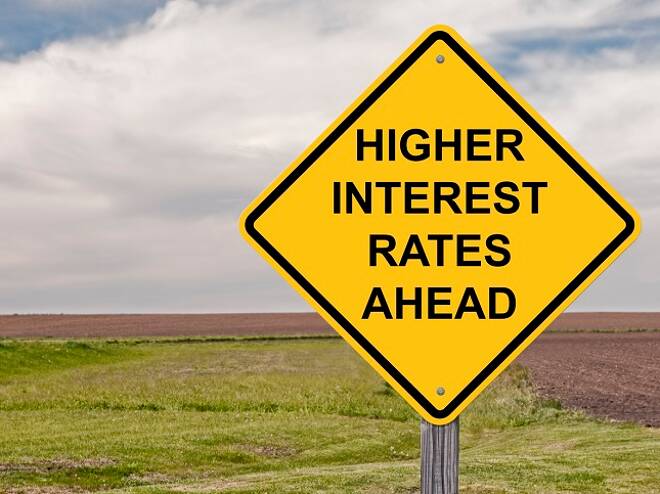Advertisement
Advertisement
Treasury Traders are Asking, ‘What if the Fed is Wrong about Rising Prices Being Just ‘Transitory’?’
By:
This time the jump in yields is different. This time, the professionals have evidence of inflation.
The sharp sell-off in the U.S. equity markets on Wednesday may have grabbed most of the headlines, but the most telling event and the one that drove the price action in several financial markets including stocks, gold and Forex was a jump to a one-month high by the U.S. Treasury yields.
This is because when it’s all said and done, Treasury yields set the tone in all markets. To some, Wednesday’s jump in yields may have come as a surprise, but the surprise was in the consumer price report. The move in yields may have been telegraphed as early as last Friday when yields clawed back from weakness driven by the huge U.S. jobs miss.
Treasury Yields Tick Higher, Reversing Post-Jobs Report Decline
When the jobs report came out at 12:30 GMT last Friday, professionals were already looking forward to the inflation report, which they saw with great confidence rising about 3.6%. The jobs data was stale data and most professionals saw the miss to the downside as an aberration.
Chicago Federal Reserve president Charles Evans even said on Monday that April’s unexpectedly small increase of 266,000 payroll jobs is likely a “one month thing” associated with the complexities of reopening the economy after the coronavirus pandemic.
On Friday, U.S. Treasury yields made back some ground after initially falling on April’s jobs report that fell short of expectations.
The yield on the 10-year Treasury note closed flat at 1.579%. Shortly after the release of the jobs report, yields hit 1.469%, its lowest level since March.
Here where it gets complicated. The yield drop was a “knee-jerk reaction” that faded as the session wore on and the market digested the data, according to analysts.
“Despite a huge miss, which it was, it’s still employment going in the right direction,” said Andrew Richman, senior fixed income strategist at Sterling Capital Management.
As of Friday’s close, U.S. interest rate futures indicated that traders pushed out expectations of a Fed rate hike by roughly three months after the payrolls report’s release.
Fast Forward to Wednesday’s Trade
U.S. Treasury yields moved higher on Wednesday after key inflation data showed a faster-than-expected rise in prices.
The yield on the benchmark 10-year Treasury note rose 5 basis points to 1.686%, hitting the highest level since April 13. The yield on the 30-year Treasury bond gained 3 basis points to 2.386%.
At the end of Wednesday’s session, futures market expectations for a Fed rate hike moved forward to December 2022 from mid-2023, said Ian Lyngen, head of rate strategy at BMO.
Higher Yields Coming
Although yields surged on Wednesday, the groundwork for the move had already been laid on Friday after the jobs miss.
Yields rose and financial markets tumbled on Wednesday because red-hot consumer inflation data for April spooked investors and raised concerns that the Fed is wrong about rising prices being just “transitory”.
When yields were rising earlier in the year, the move was fueled mostly by strong expectations of higher inflation and an early exit from policy by the Fed. This was speculation, however, that was squashed by the Fed in its monetary policy statement.
This time the jump in yields is different. This time, the professionals have evidence of inflation. This time, speculators and professionals are saying that if the Fed is incorrect about inflation being temporary. Then it could begin to unwind its easy policies quicker than expected and ultimately raise interest rates.
For a look at all of today’s economic events, check out our economic calendar.
About the Author
James Hyerczykauthor
James Hyerczyk is a U.S. based seasoned technical analyst and educator with over 40 years of experience in market analysis and trading, specializing in chart patterns and price movement. He is the author of two books on technical analysis and has a background in both futures and stock markets.
Advertisement
